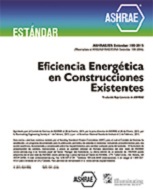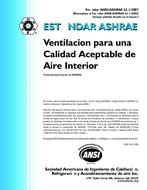Description
Click here to purchase
This paper discusses the development and implications of American National Standards designed to evaluate the long term CO2e emissions in buildings. Standards for both residential and commercial buildings that evaluate CO2e impact using hourly energy use to project long term CO2e emissions are discussed. The fact that the accounting methodology is hourly instead of annual is of significant importance as both building energy use and the emission intensity of the electricity utility grid vary by time of day and season. Additionally, on-site fuel choices have large impacts, especially with respect to forecasting long term emission impacts. As carbon emissions in electric utility grids are reduced through the use of renewable resources, energy storage and distributed energy resources, the impact of on-site combustion fuels on long-term emission forecasts becomes increasingly preponderant. Since buildings last for many decades, forecasting the future electricity grid is critically important. Electric-sector planning models can be used to create forward-looking emission metrics that are useful to the building community in long term building energy emission forecasting and in understanding how the grid may evolve over time. The development of the 2021 Cambium database by the U.S. National Renewable Energy Laboratory (NREL) satisfies this need for future electricity grid forecasting for the U.S. Similar databases should be developed for other grids. There are also U.S. Environmental Protection Agency (EPA) Greenhouse Gas (GHG) Protocol Scope 3 implications embedded in the use of these standards. This paper discusses two American National Standards that were developed to address CO2e emissions emanating directly from building energy use – one for residential dwelling units and the second for commercial buildings. Both are intended to evaluate the CO2e implications of current and future building energy design decisions, where CO2e includes methane (CH4) and nitrous Oxide (N2O) as well as carbon dioxide (CO2) GHG emission equivalents. The U.S. Residential Energy Services Network (RESNET) has incorporated a CO2e Index in ANSI/RESNET/ICC Standard 301, which is used by ASHRAE Standard 90.2 to determine compliance for residential dwelling units and ASHRAE is incorporating a zero carbon emission factor (zCEF) for compliance with ASHRAE Standard 189.1 for commercial buildings. Both standards utilize the Cambium database to forecast future electricity grid emissions. Both standards use combined pre-combustion plus combustion long-run marginal CO2e emissions rates (LRMER_CO2e) applied against hourly energy use to evaluate long term emissions. Both standards assume the NREL low-cost renewable energy scenario for determining the future fuel mix of the electric grid. Both Standards also use the Cambium Generation and Emission Assessment (GEA) regions for geographic grid sensitivity.
Product Details
- Published:
- 2022
- Number of Pages:
- 8
- Units of Measure:
- Dual
- File Size:
- 1 file , 1.4 MB
- Product Code(s):
- D-94056-C02
- Note:
- This product is unavailable in Russia, Belarus




